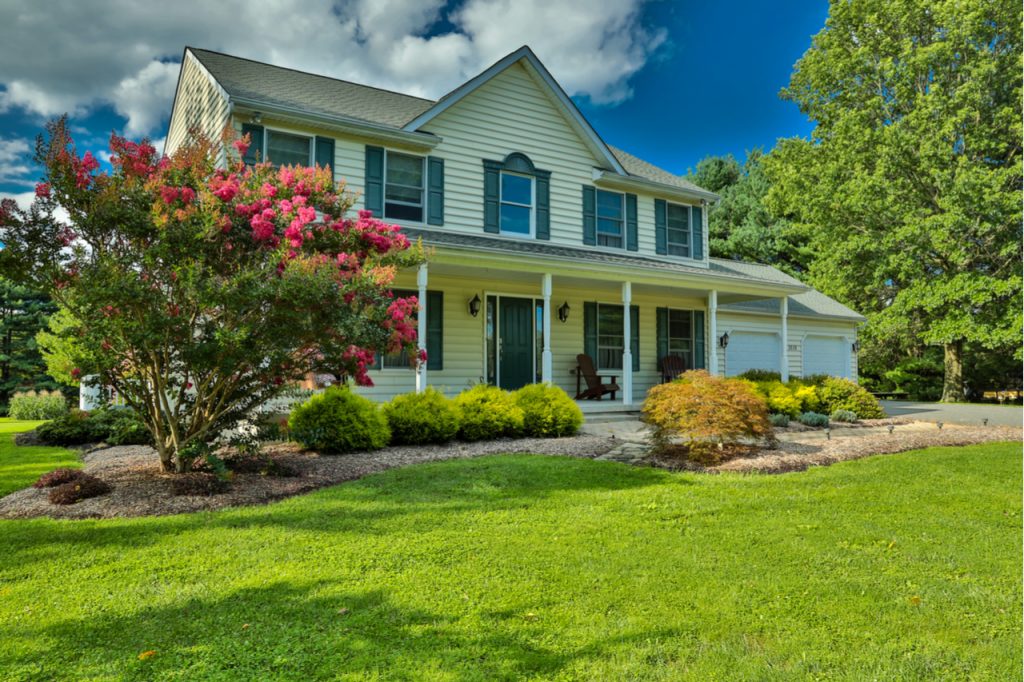Empowering Technology to Avoid Landscape Losses

The drought that gripped the U.S. a few years ago may be over, but lessons learned to conserve water and landscape loss are very much applicable to today’s front and backyards.
Many municipalities continue to enforce weekly water restrictions as the nation recovers from shortages that left some reservoirs and lakes high and dry. Communities are attempting to preserve much of today’s plentiful water supplies by enforcing water conservation.
As water supplies dwindled around 2012, xeriscaping gained popularity to keep landscapes from looking burned and depleted. Grass and traditional plants were replaced by low-maintenance rock, decomposed granite and native foliage. Also Evapotranspiration (ET)-based irrigation technology emerged to control the volume of watering.
While some of xeriscaped landscapes remain, a green lawn has become desirable again, especially now that water supplies are back to normal. But experts says that efficient irrigation practices are just as necessary as they were four or five years ago.
“During the drought, we learned a lot of landscape design principle changes,” said Earthworks President Chris Lee. “Even though we’re past the drought, a lot of cities still have the twice-weekly watering restrictions. We need to still be as efficient as possible in irrigating our lawns.”
ET-based controllers act like a thermostat for an apartment property’s sprinkler system, telling it when to turn on and off, while using local weather and landscape conditions to tailor watering schedules to actual conditions on the property. Instead of irrigating using a controller with a clock and a preset schedule, ET controllers allow watering schedules to better match plants’ water needs while minimizing runoff.
Duration, frequency, and soak times are set by several factors. Weather data combined with geographical location, sprinkler type, plant type, soil type, and a fine tuning option, enables the smart irrigation controller to irrigate with precision. Also, problems with output – such as a malfunctioning zone – can be identified through the flow sensor with a swipe of the screen or click of the mouse anytime, anywhere.
The technology is mobile friendly and systems can be controlled from anywhere, anytime.
Technology helps property managers get a grip on irrigation
A big benefit to ET-based controllers is minimizing overwatering, which is more prevalent in the summer, according to the Environmental Protection Agency. EPA says that 30 percent of all water consumed in the U.S. is used for outdoor purposes and that up to half is wasted during the summer because of evaporation, runoff or wind.
In 2012, Texas-based Weathermatic, a manufacturer of ET-based controllers, began a sustainability program and started reducing water consumption for property management companies. After three years, the average water usage of Weathermatic’s top five property management customers dropped 50 percent, said President and CEO Mike Mason. The savings were twice as much as California’s mandated 25 percent reduction in water usage around 2012.
Lee says the company is working with landscapers to help property management companies switch to the controllers so landlords can stay on top of water consumption. The technology won’t necessarily save a lot on the water bill but will help apply the right amount of moisture at the right time to keep plants and grass healthy.
“You’re not going to save a lot of money on your water bill but when you’re talking about money on the capital side because you’re not managing irrigation as efficiently as you can and you increase plant material loss, that’s where it will make an impact,” he said.
Making the best of water restrictions
The program, which starts in January, is particularly beneficial for property management companies who have multiple rental homes. High-end commercial grade controllers can run upwards of $5,000; typical residential controllers retail as high as $1,800. By working with select landscape companies, property managers can save on installation costs and get the benefit of ET-based controllers without outlaying a bunch of capital, Lee said.
Controllers can be programmed to manage city restrictions and integrate with sensors to identify variances in flow rate, an indicator that can lead to leak detection or equipment malfunction that prohibits adequate coverage. Flow sensors ultimately reveal whether or not the system is working correctly to avoid plant and grass loss, which can get expensive to replace.
The system will also shut down automatically during disasters and emergencies.
“When you only have a couple of shots a week to irrigate your property you need to know if the system is working properly,” Lee said. “Flow sensors look at consumption and tell if the system is coming on or not.”
The controllers can be especially beneficial for rental homes where residents manage the landscape irrigation. Ultimately, the landscape gets irrigated properly to avoid overwatering or under-watering, which affects plant life. The home’s front and backyards always look good, enhancing curb appeal and reducing the need to replace dead or damaged plants, which ultimately costs the landlord, Lee says.
“Cities aren’t going to relax their water restrictions,” he said. “They’re here to stay. Managing irrigation efficiently is going to continue to be critical, no matter the conditions outside. This technology is an opportunity for property managers to be efficient about how they water and ensure the landscape is healthy and looks good. It really does the thinking for you.”







